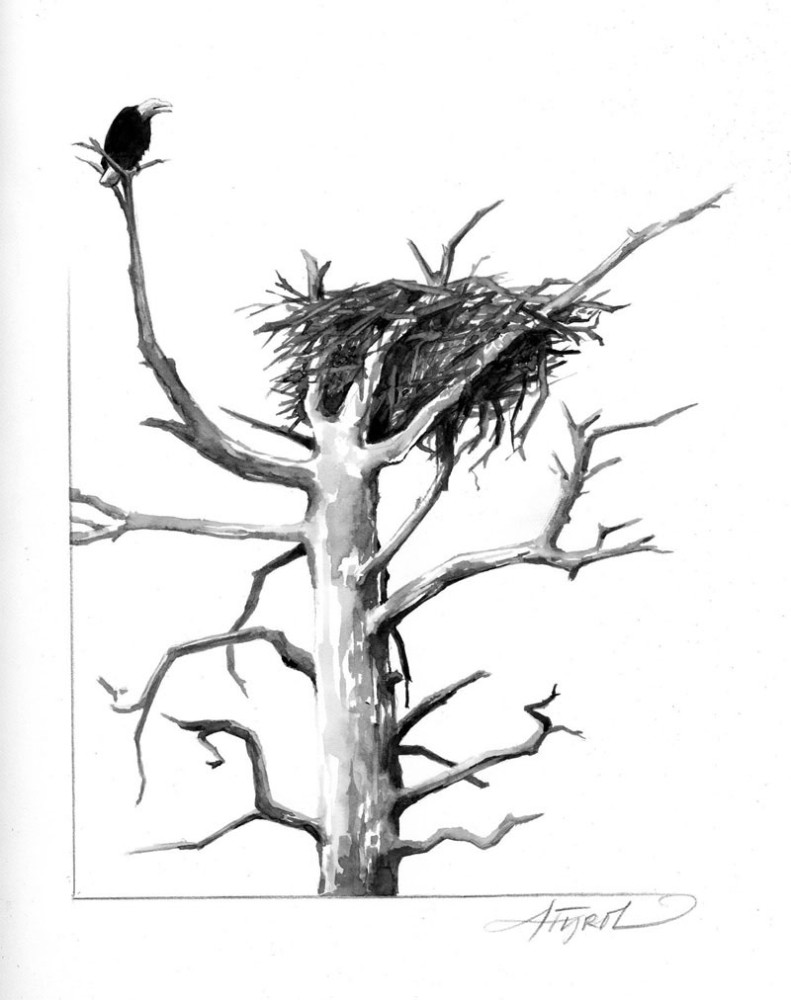
Forrest Hammond slid a few feet down a hillside before he grabbed the trunk of a sapling to catch himself. With his crampons now planted rather securely in the ice, he edged down the hill until he reached a large white pine tree dripping with climbing ropes.
Heading down this slippery slope in Rockingham, VT, was risky enough, but the guy really out on a limb was Dennis Davis, an arborist from Massachusetts. He was 80 feet up the tree, painstakingly building, of all things, an eagle’s nest.
It was January 2007, and Hammond, a biologist with the Vermont Department of Fish and Wildlife, was working with Davis and Davis’s son, Garrett, on a project to coax bald eagles back into Vermont to nest.
The previous spring, a pair had nested in the state, and their young were believed to be the first eagles born in Vermont in 50 years. This was especially significant because Vermont had been the only state in the bald eagle’s range where the bird had not nested since the nation’s eagle population was nearly wiped out by DDT. (The pesticide was banned in 1972 after it was determined it weakened birds’ eggshells, and America subsequently launched what turned out to be a hugely successful eagle-recovery program.)
Those two nesting eagles in Vermont ran into a problem, however. Raccoons killed their nestlings that spring, and then in October the tree holding the nest was downed in a windstorm.
So Davis, arborist and birder, was hired by Vermont to lend a hand. He had learned to build nests stick by stick from eagle experts in Massachusetts and by studying scientific papers on the subject. This was his fourth nest, having built three others in the Bay State.
The nest he was assembling in Rockingham consisted of sticks, some five feet long, some as thick as five inches. As Davis was perched on a branch, Garrett worked below filling a garbage can with sticks and sending them up using ropes and pulleys.
During the project, Hammond explained that a pair of bald eagles typically might spend an entire breeding season building their nest. So, this man-made project was meant to serve as an important short cut. Davis finished constructing the bathtub-size nest in just three hours.
Several weeks after the trio left the site a pair of eagles, in fact, visited the nest and even spruced it up some, but the female didn’t lay eggs. The pair left, and eventually the nest fell apart in another windstorm.
Hammond believes the nest-building effort makes sense. “We think it was worth a shot, considering it was the first nesting pair in the state,” he said in an interview earlier this month. “We’d try it again in special circumstances.”
The human effort failed, but there has been some recent good news on the eagle front in Vermont. This past summer a pair of bald eagles successfully raised a chick in a nest they built near the Connecticut River in the Northeast Kingdom.
Vermont, however still lags far behind other states in the region in terms of eagle populations. Each year in New Hampshire about a dozen pairs of bald eagles raise chicks, typically two per nest, according to the state’s Audubon Society. Massachusetts reports having more than two dozen breeding pairs, while Maine has hundreds.
But the outlook in Vermont is now looking even better. The pair on the upper Connecticut is expected to be in their nest again this spring, and two other pairs have been spotted in Vermont, one pair near Springfield, and the other along the shores of Lake Champlain.

